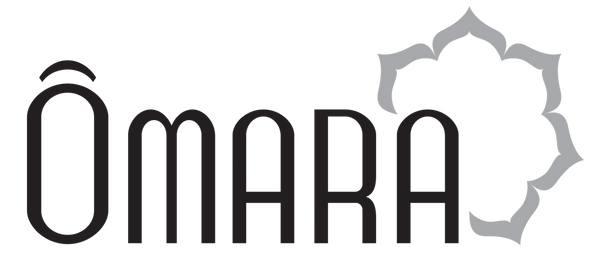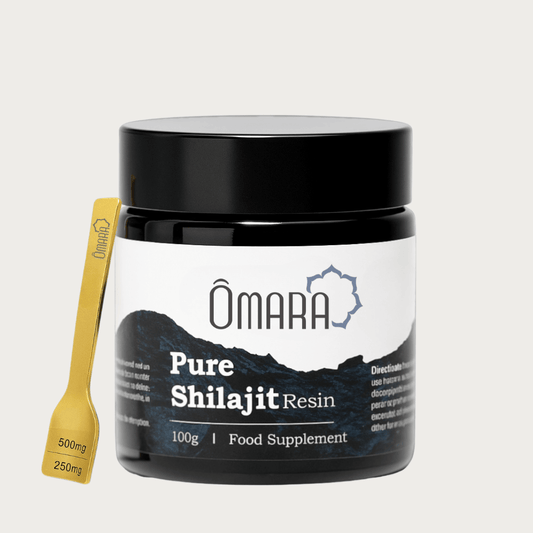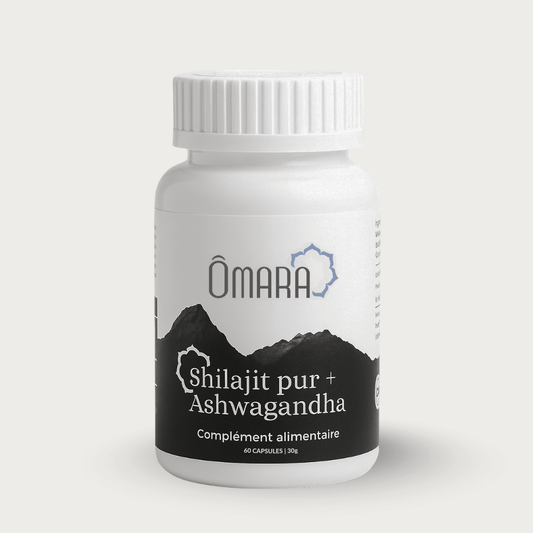
Shilajit Cleansing Methods: Surya Tapi, Milk, Herbs & More: Which is Best for My Health?
Share
Shilajit , nicknamed "conqueror of the mountains" in Ayurvedic texts, is a mineral resin prized for its benefits on vitality, immunity, and longevity. However, the quality of Shilajit depends heavily on its purification method. Discover the different techniques, their advantages and disadvantages, to choose the one that suits you.
Why purify Shilajit?
Raw shilajit, extracted from the mountains, often contains impurities such as sand, heavy metals, or microorganisms. Rigorous purification is essential to ensure its safety, effectiveness, and the bioavailability of its nutrients, such as fulvic acid and minerals.
The different methods of purification
1. Surya Tapi Method: Purification in the Sun
Mentioned in the Charaka Samhita , the Surya Tapi method uses spring water and solar energy, without artificial heat or animal products.
- Process : Dissolved in spring water, filtered through muslin, optional addition of herbs (Amalaki, Haritaki, Bibhitaki), then slowly dried in the sun for several weeks.
- Benefits : Preserves fulvic acid, high bioavailability, respects Ayurvedic principles, suitable for vegans.
- Disadvantages : Long and expensive process, less common, more expensive final product.
“The Surya Tapi method is the most natural. I noticed a more consistent energy with this Shilajit.” – Maurin, masseur and cyclist
2. Traditional Milk Method (Gorodugdha Shodhana)
This Ayurvedic method uses boiled cow's milk to remove toxins and sweeten the taste of Shilajit.
- Process : Shilajit is mixed with boiling milk, filtered, and then dried.
- Benefits : Simple, traditional, improves taste, milk acts as a vehicle (anupana).
- Cons : Not suitable for vegans, risk of cross-contamination, possible loss of water-soluble nutrients.
3. Modern method with distilled water
Used in industry, this method uses temperature-controlled distilled water to purify Shilajit.
- Process : Dissolution in distilled water, filtration, then evaporation to obtain a purified product.
- Advantages : Fast, standardized, suitable for mass production.
- Disadvantages : Less respectful of traditions, may reduce subtle elements (prana).
4. Herbal Shodhana Method
This method incorporates medicinal plants such as Triphala or Neem into the purification water.
- Process : Boil the Shilajit in a herbal decoction, strain, then dry (often in the sun).
- Benefits : Synergy with plants (detox, immunity), gentle on Shilajit.
- Disadvantages : Less standardized, variable herb quality.
5. Altai Method (Water Bath)
Specific to Altai Shilajit, this method uses a cold water bath and slow evaporation.
- Process : Shilajit is placed in cold water, hardened, cut, evaporated with herbs, and then dried on beeswax trays.
- Advantages : Preserves regional properties, effective for Altai.
- Cons : Long (2 weeks), region specific.
6. Thermal evaporation method
An older method that heats the Shilajit to remove moisture.
- Process : Dissolution in water, filtration, then heating to 60-80°C.
- Advantages : Fast, economical.
- Disadvantages : Reduces nutrient quality due to high temperatures.
7. Chemical method (to be avoided)
Some manufacturers use chemical solvents to quickly purify Shilajit.
- Process : Treatment with acids or solvents to remove impurities.
- Disadvantages : Risk of toxic residues, massive loss of nutrients, not recommended.
Comparison of methods
| Method | Benefits | Disadvantages | Suitable for |
|---|---|---|---|
| Surya Tapi | High bioavailability, natural purification | Long, more expensive | Purists, optimal health |
| Milk | Traditional, easily accessible | Less suitable for vegans | Classical Ayurvedic |
| Distilled water | Fast, industrial | Less nutritious | Consumer products |
| Herbs | Synergy with plants | Less standardized | Holistic approach |
| Altai (Water Bath) | Preserves regional properties | Long, regional | Altai users |
| Thermal evaporation | Economic | Reduces quality | Low-cost production |
| Chemical | None | Dangerous, to be avoided | Person |
How to choose the right method?
The Surya Tapi method is ideal for those who prioritize purity and Ayurvedic traditions, but its cost can be a deterrent. The milk method is suitable for followers of classical Ayurveda, while herbal decoctions offer a synergistic approach. Modern methods like distilled water or centrifugation are convenient for mass-produced products but can compromise nutritional richness. Avoid chemical methods at all costs.
Discover our Surya Tapi Purified Shilajit, lab-tested for 0% heavy metals. Use code SURYA for 20% off!
Buy now and boost your vitalityFAQ: Your frequently asked questions
The Surya Tapi method is often considered the purest, as it preserves nutrients and respects Ayurvedic traditions.
No, it contains traces of milk. Prefer the Surya Tapi or herbal method.
Choose products that are laboratory tested, with a certificate of analysis for heavy metals and contaminants.
No, it is rare and not recommended. Always check the product's origin and testing.
Conclusion
Shilajit purification is crucial to making it a safe and effective product. The Surya Tapi method is distinguished by its naturalness and faithfulness to Ayurvedic traditions, but other methods such as herbal decoctions or milk purification may be suitable depending on your needs and preferences. Always be sure to choose lab-tested shilajit from a reliable source.
Try our Shilajit Purified by Surya Tapi


